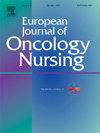前列腺癌患者的自杀风险:趋势、预测因素和使用SEER数据的预测图的发展
IF 2.7
3区 医学
Q1 NURSING
引用次数: 0
摘要
目的通过分析前列腺癌(PCa)患者的自杀倾向、主要预测因素和开发预测工具来评估其自杀风险。利用监测、流行病学和最终结果(SEER)数据库数据,我们旨在确定高危人群并指导降低自杀相关死亡率的策略。方法回顾性分析2010 ~ 2020年的SEER资料。计算标准化死亡率(SMRs),比较前列腺癌患者与普通男性人群的自杀风险,并按年龄和种族分层进行亚组分析。确定了包括自杀在内的主要死亡原因的临床和人口变量的比例死亡率(pmr)。采用Cox回归模型建立3年和5年自杀风险预测图,并通过校准曲线和一致性指数进行验证。结果spca患者的自杀SMR显著升高,其中以55岁的年轻患者(SMR = 8.50)和白人患者(SMR = 14.98)居多。虽然总体自杀风险在研究期间有所下降,但特定的亚群体仍然受到不成比例的影响。PMR分析表明,年龄较小、白种人和疾病阶段较早与较高的自杀比例相关。事件时间分析显示,20.28%的自杀病例发生在诊断后的第一年。预测模型确定年龄、种族、放疗和婚姻状况是自杀死亡率的独立危险因素。结论:自杀对前列腺癌患者具有显著但可预防的风险,尤其是在年轻(尤其是55岁)、白人和未婚个体(分居、离婚、丧偶者和未婚者)中。开发的预测工具可以帮助识别高危患者并实施有针对性的社会心理干预。本文章由计算机程序翻译,如有差异,请以英文原文为准。
Suicide risk in prostate cancer patients: Trends, predictors, and development of predictive nomograms using SEER data
Purpose
To assess suicide risk in prostate cancer (PCa) patients by analyzing trends, key predictors, and developing predictive tools. Using the Surveillance, Epidemiology, and End Results (SEER) database data, we aimed to identify high-risk populations and guide strategies to reduce suicide-related mortality.
Methods
A retrospective analysis was conducted using SEER data from 2010 to 2020. Standardized mortality ratios (SMRs) were calculated to compare suicide risk in PCa patients with that of the general male population, with subgroup analyses stratified by age and race. Proportional mortality ratios (PMRs) were determined for the leading causes of death, including suicide, across clinical and demographic variables. Predictive nomograms for 3-year and 5-year suicide risk were developed using Cox regression models and validated through calibration curves and concordance indices.
Results
PCa patients exhibited elevated suicide SMRs, particularly among younger (<55 years, SMR = 8.50) and White patients (SMR = 14.98). While overall suicide risk declined over the study period, specific subgroups remained disproportionately affected. PMR analysis indicated younger age, White race, and earlier disease stages were associated with higher suicide proportions. Time-to-event analysis revealed that 20.28 % of suicide cases occurred within the first year after diagnosis. Predictive modeling identified age, race, radiotherapy, and marital status as independent risk factors for suicide mortality.
Conclusions
Suicide poses a significant yet preventable risk for PCa patients, especially among younger (especially<55 years), White, and unmarried individuals (both separated, divorced, and widowed and never married). The developed predictive tools can aid in identifying high-risk patients and implementing targeted psychosocial interventions.
求助全文
通过发布文献求助,成功后即可免费获取论文全文。
去求助
来源期刊
CiteScore
4.40
自引率
3.60%
发文量
109
审稿时长
57 days
期刊介绍:
The European Journal of Oncology Nursing is an international journal which publishes research of direct relevance to patient care, nurse education, management and policy development. EJON is proud to be the official journal of the European Oncology Nursing Society.
The journal publishes the following types of papers:
• Original research articles
• Review articles

 求助内容:
求助内容: 应助结果提醒方式:
应助结果提醒方式:


